A lawn mower or lawnmower is a machine driven by motors, a beast or a man, that has one or more revolving blades to cut grass at an even length to make a beautiful lawn.
Lawn mowers generally divided up into two categories depending on the axis of rotation of the blades. If the blades rotate around a vertical axis (like most of the mowers these days) its know as a rotary mower. If they rotate horizontally they are known as cylinder or reel mowers.
Here, in this article, we drive you through different types of lawn mowers, let’s begin.
Table of Contents
Natural Lawn Mower
The original mower, used since the beginning of time. Still the most efficient and the economical to use. An excellent solution if your lawns are a bit larger than normal.
Amongst all the super expensive, robotic, time-consuming or plain old hard work lawn mowers it’s nice to know you can still get a cheap and completely automatic natural way to cut your lawn by getting a sheep, goat, cow or even a goose.
Of course, there are some ups and downs to owning an animal. You need to keep them happy and can’t be locked in the shed when you go on holidays.
But on the other hand, you do get some free milk, wool, meat and what most of us prefer a loving pet to keep you company. With all that plus you don’t require any petrol, there is no exhaust which harms the environment and no rust. It’s self-starting and fertilizes grass while cutting it. It’s a pretty good package, so if you can do it I would highly recommend it.
You’ll need a shelter for most animals, somewhere for them to get out of the cold, heat or any extreme weather conditions.
Animals may also require some maintenance like, cutting hair, food, milking and health checks, etc.
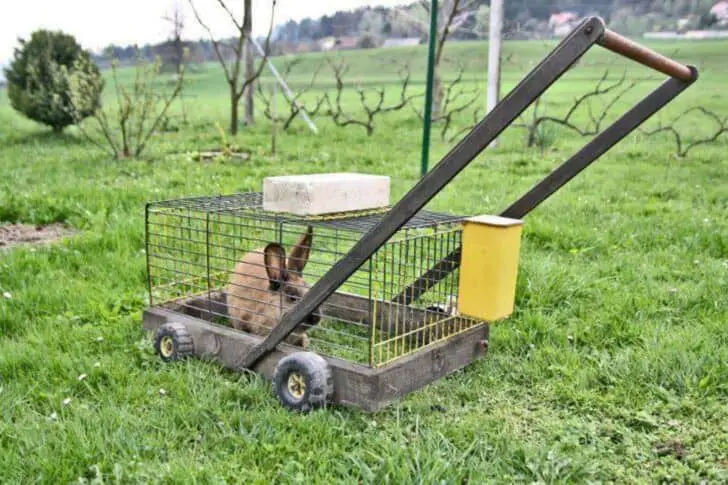
Reel Mower (The Traditional)
The traditional mower that your Grandpa owned and was stuck in the back shed of your first share house, dragged out once a year, kicked in frustration and put away.
The first push lawn mower appeared in 1830. Edwin Budding and John Ferrabee, a factory owner living and working in Thripp, England, invented it. Between 1830 and 1880, slews of patents came out. It seems everyone had his own design. The new machines resembled everything from paddle wheels to racecars. By 1900, the push reel mower was perfect. It was the ideal of the times. Mass production ensured its continuance.
Push reel mowers are a classic and simple machine. The gears of the lawn mower spin a whorl of between five and eight spiral-shaped blades. These pass by a stationary blade at the rear of the mower. The two, working together, slice the blades of grass. Reel mowers do not tear. They cut to provide a smooth, fine grass surface. Grass cutting experts recommend five blades for tender grass; six blades are suitable for tougher grass.
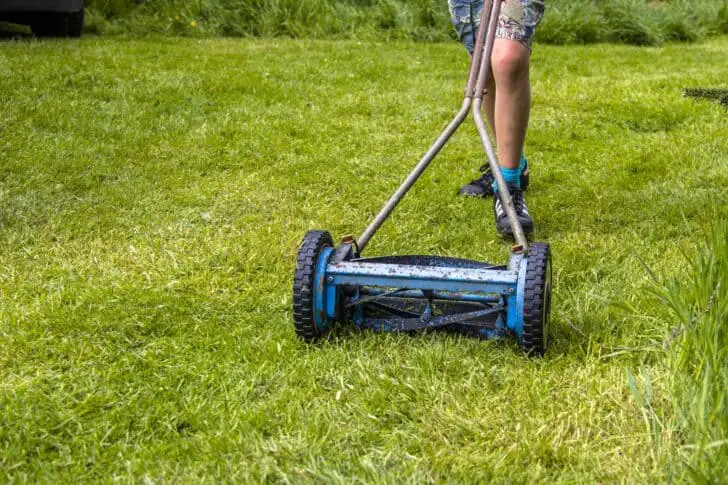
Reel mowers are not for everyone. They are good, however, for mowing native grasses and the new alternative lawns. The newer versions are quieter than ever before. Moreover, reel machines do not huff, puff, and cause your neighbors to hate you in those early morning hours.
Reel mowers are also considered safe machines. The blades are in sight and in control. You stop pushing, they stop cutting. Fewer injuries occur with reel mowers. Reel mowers also do not hit you with flying debris at high speeds.
Repairs and maintenance work make reel mowers reliable. The blades require sharpening annually, but there are no motors to tinker with or gas engines to bother about. Blade heights are adjustable, making different cuts smoother and finer.
Reel mowers are restricted in use. They are still preferred for fine lawns, but not extensive properties. They are labor-intensive, demanding you spend more time cutting your lawn then you would need to allocate with a rotary mower. Moreover, reel mowers, while good on contours are best for level grounds. They are not practical if you need to mow tall grasses and/or cover rough and uneven ground. It was one reason for their demise.
Push reel mowers ruled the lawn scene in North America until the invention of the power mower. Although the power reel mower offered the first alternative, it, too, was supplanted. By the 1950s, rotary mowers were kings of the suburbs. The larger lawns, the lighter machines and the overall perception of lawn care had shifted in favor of the rotary blade. Although a few companies continued to manufacture push and power reel mowers, many more individuals bought and used rotary mowers.
Recently, however, the reel push mowers are making a comeback. Several companies, including the ever-faithful American Lawn Mower Company, are seeing revived sales. The reasons are simple. Baby Boomers like to use the familiar. Health-conscious people see lawnmowers as a form of exercise – lawnmower aerobics. Currently, a priority for many people in the environment. Push lawn mowers are the most environmentally friendly mowers.
Another contributory factor is the changes made to the mower. Reel mowers are light in weight, mostly in a range of 40-60 pounds. The wooden handles are gone. Today’s mowers have aluminum handles, pneumatic tires, blades of high-carbon steel, improved ball bearings, gears, and axles. The process of blade adjustment is now simpler. Overall, the new reel mower is easier to handle, maintain, adjust and push making it an excellent choice for small to mid-sized lawns.
The Normal Lawn Mower
The normal every day rotor lawn mower. The one that you grew up, the one you probably used last weekend, the one you shouted at last weekend for waking you up.
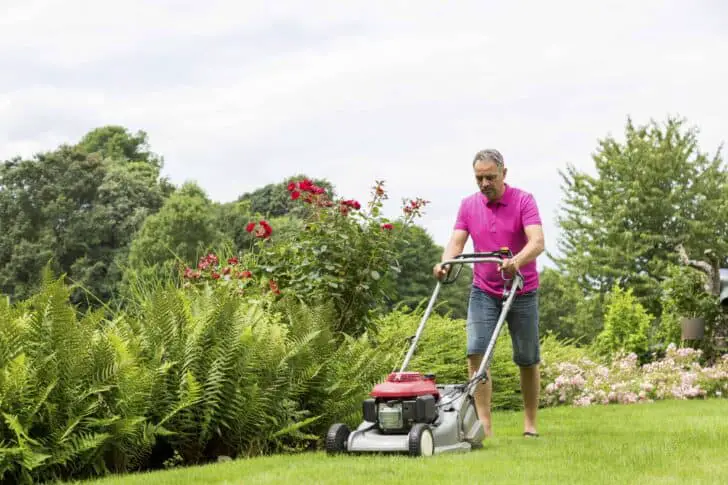
Normal mowers are the traditional walk-behind power lawnmowers. They are a common sight around the world. There are two basic types of power lawn mower: rotary and reel. Both offer you choices between gas and electric; both are easy to use. The two different types also offer similar attachments such as baggers to store cut grass or leaves and mulchers (side or rear). The most common one, however, is the rotary lawn mower.
Rotary mowers did not become popular on the mowing scene until the 1950s, coinciding with the move towards suburbia and the cult of the lawn. They put the word “power” into the term power lawnmower. It is something the manufacturers have continued to do ever since. All rotary mowers are power or “normal” mowers. There are no push varieties.
Rotary mowers became the dominant mower in the market for a number of reasons. Originally, the appeal was price. Rotary mowers cost less than reel mowers. There was also the selling point of maintenance. Companies repeatedly claimed the mowers required fewer repairs and daily maintenance than their reel counterpart did.
Another point in favor of rotary mowers is their ability to cut tall swards. They mow through tall grass and weeds with minimal effort. They are also good on rougher terrain. Manufacturers offer a wide variety of blade sizes to choose from – though none reach as close to the ground as reel mowers. The cutting width of a rotary mower can range from 16 to 22 inches.
Read more: How to Choose the Best Lawn Mower
Rotary mowers operate on a different cutting principle than reel mowers. The blade of a rotary machine spins on a vertical axis. In a scythe-like motion, the sharp blade strikes the grass and slices off the tips.
Rotary mowers, however, are also, a little harder on the grass, tearing and not cutting the greenery. This is why many professionals prefer reel mowers.
Rotary mowers operate on both electric or gas. These small power mowers also allow you the opportunity to use electric in two forms – corded or rechargeable battery. This increases your mobility to be comparable to a gas-powered mower while reducing both noise and pollution. The noise factor is worth considering if you have noise-sensitive neighbors. Electric mowers require slightly less maintenance than gas mowers. The disadvantage is lawn size. They are only suitable for small to mid-sized lawns.
Also on the market are larger walk-behind rotary power lawn mowers. These are not riding machines but their manufacturers have designed them specifically for large lawns and landscapes. These professional models are big, powerful lawnmowers. Their wide decks conceal formidable engines.
Two of the more recent fashions in rotary lawn mowers are zero-turn capability and recycling mowers. The former means the mower can turn on a dime. The latter is a means by which the grass cuttings return or are recycled.
Although mowers do mulch or replace grass cuttings, the current models distribute the grass cuttings so completely you cannot see them.
Popular changes over the years include angled handles allowing you to push the mower forward and not direct your energy into the ground. Rotary models now have wheels of a lighter plastic or steel and padded handles. All these changes intend to make you feel mowing a rotary model is more of like a walk in the park than a push up a slope.
With the technology advancement, self-propelled lawn mowers also came in the market which moves in the guided direction with its self propelling mechanism and hence doesn’t require human effort for pushing it from behind.
Read more: How To: Lawn Mower Repair and Maintenance
The Ride On Mower
The ride-on mower, everyone man wants one to legitimate their desire for a go-cart while doing garden chores. As lawns get bigger so does the demand to cut the lawn in the same amount of time or in comfort. Although riding lawn mowers cost more than other types of mowers but you get leisure and comfort of mowing while being ridden on the mower.
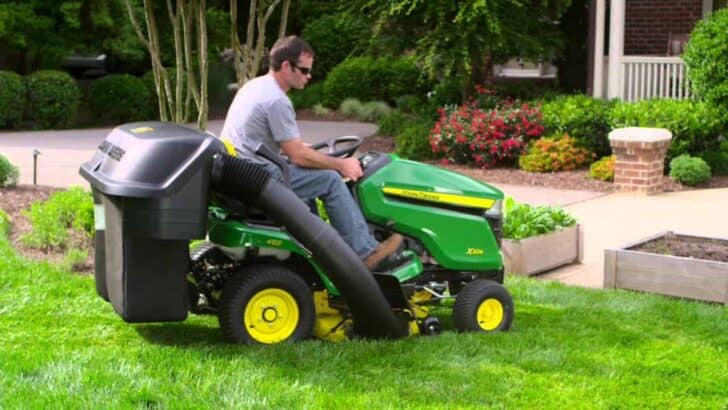
In addition, as lawn mowers get past a certain size, it gets harder to push them and the motor needs not only to rotate the blades but drive the mower too. These have to lead to the rise of ride-on mowers, so on large lawn mowers, you can sit on and drive around.
They are basically the middle ground between the normal lawnmowers and tractors. In fact, most of these resemble small agricultural tractors. In the more powerful models, they even take it further by enabling other devices to be mounted on the front like rototillers, snowplows, snowblowers, yard vacuums and sometimes even lifting buckets.
As for when they were ‘invented’ or the first one was released I have been able to find out the earliest on I can find on record is in 1954 (let me know if you know of any earlier than this).
Ride-on mower is normally designed so the user is seated on top of the motor with the controls in similar locations to cars. Most of these have manual transmissions although there are one or two fancy models out the with automatic and electric transmissions, you do pay for it. Similar to normal mowers these normally have a rotating multi-blade horizontal cutting system mounted in the center of the lawnmower.
Different Options:
Front-mounted deck: These mowers are generally more maneuverable around tight corners than the tractor type, but are generally more expensive. Most of these machines cut using the horizontal rotating blade system, though usually with multiple blades.
Mow Aerator Riding Lawn Mower Tire Brackets: Mow and aerate your lawn at the same time with the new and revolutionary garden product. This set of brackets is easy to install and remove and easy to store for future use.
The Mow-Aerator is a simple set of brackets with 1.5-inch spikes made of cold-rolled steel, powder-coated to prevent rust, that attaches to the rear wheels of your riding lawn mower which fits tire sizes of 20×8 and 18×8. Unlike plug aerators or pull-behind aerators, this provides you with a way to mow and aerate at the same time.
The benefit of aerating at least once a month is it provides your soil with air, helping water and fertilizer to move into the roots of your grass and providing a stronger and healthier root system. The set of brackets weighs 38 pounds.
Lawn Tractor Cover: I don’t know about you but these mowers are getting bigger and my shed isn’t so these are becoming a must. If you are buying a new mower push your dealer into throwing one of these in.
Grass Collectors: There is some debate as to the best thing to do with grass clippings. I like to leave them there as mulch but if you have a ride on and want to pick up the clippings then you need a bag to catch it in.
Riding Mower Sunshades: You are always mowing when it is sunny a bit of sun protection is a great idea.
The Robotic Lawn Mower
Geek fantasy. See the lawn as a chore then these are for you, a little robot that will charge itself and wander around the garden cutting your lawn. Ideal for those nerdy amongst us that don’t want to damage our monitor tan by going outside.
Solar-Powered Lawn Mower
Solar power lawn mowers for the greens amongst us, me being one. Makes sense, you are normally cutting the lawn on a sunny day anyway.
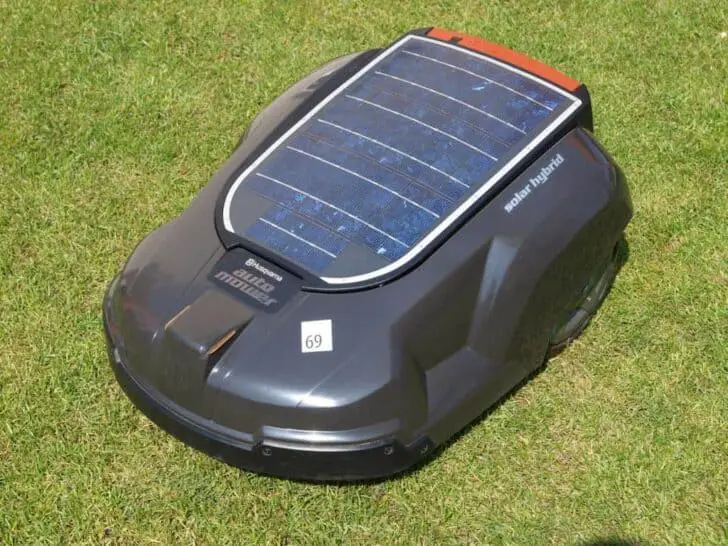
Whether you do it your self or buy on these are a great option. Not only have they relatively quiet compared to their petrol-powered counterparts, but they also are environmentally friendly which means you’re not breathing in those fumes while cutting your lawn grass.
Bought ones
The best of the bought ones not only are quite and green but are robotic so it mows the lawn for you. Husqvarna is currently trialing a new solar robotic lawn mower to hit the markets soon (*est. $US2,500).
Homemade ones
The most popular instructions on home to do this yourself are at equals and Appropedia. This walks you through from scratch on how to rip apart an old lawn mower, attach an electric motor and battery and charge it from a solar panel. This is a great project that most people can handle.
Of course, you can extend the idea of this, browse around for an electric lawn mower that uses less power than the average one and strap some batteries to it and charge them from some panels.
Not solar but still green
How about a biodiesel one? About biodiesel mowers.
The greenest and cheapest are still are the traditional push mowers. Quite and produce no emissions (unless you have been on the beans the night before). Keep them in mind if you’re looking down the green path.
Whipper Snipper
The whipper snipper. Instead of blades spinning to cut the lawn, these uses think nylon, like fishing wire spinning at high speed. Great for ticky spots and edges.
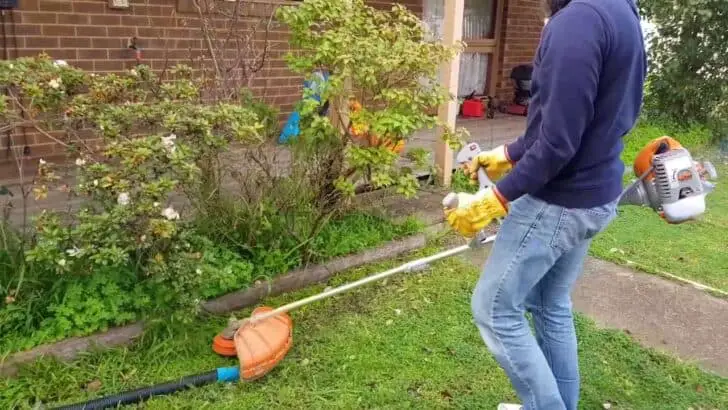
Whipper snippers have a wide variety of names. Different people refer to them as string trimmers, line trimmers, hedge trimmers, weedeaters, weed wacker, strimmers, garden strimmers, and brush cutters. The first whipper snippers came into being during the late 1960s. By 1970, the basic model we have today operated to cut and trim. The first whipper snippers had fixed heads. Next on the scene were manual heads, followed by semi-automatic (tap-and-go) and automatic.
Essentially, however, a whipper snipper is a device for cutting or edging grass and trimming hedges or ditch grass. Unlike a lawn mower, instead of using a blade, a whipper snipper employs a flexible monofilament line. The addition of nylon blades in the electric models can supplement the cutting edge. Gas-oil models often offer supplemental metal blade attachments to increase the cutting edge.
How does it work? A whipper snipper operates on a simple principle – if a line, courtesy of a motor, turns fast enough and juts out very stiffly from its rotating reel through the application of centrifugal force, the line is stiff enough to severe grass at the point of impact. As a result, the faster the line turns, the stiffer it becomes. The tougher the line, the specific shape and the amount of motor indicate whether the whipper snipper is suitable for grass, brush or both.
The machine, itself, consists of the line sitting at the end of a long hardened steel shaft housed in aluminum tubing. The shaft has one or two handles. The line is usually nylon and can be either round cut or edged. The thicker the line, the longer it lasts.
The machine may also have a shoulder strap or similar device to help support the weight. This is to prevent possible back problems. Other safety equipment includes goggles for eye protection and, possibly, earphones to cover the ears.
Whipper snippers have different types of possible engines. Those with an internal combustion engine have the engine on the opposite end of the shaft from the cutting head. Electric models have an electric motor in the cutting head.
The electric models are usually easier to maneuver. They tend to be lighter and easier to operate. They are also more environmentally friendly. Unfortunately, an electric machine is governed by the length of its power cord. The newer battery-powered models, however, increase the mobility and the amount of ground a whipper snipper can cover.
Gas-oil operated whipper snippers are popular. They have more power and, therefore, can increase the length of line they spin. The oil to gas ratio, however, must be exact. This is particularly true for the two-stroke engines.
It is possible to accessorize gas whipper snippers. Metal blades can be brought into play. In these instances, a safety shield is a necessity. You can find it on the inside or user side. The larger trimmers are much heavier. They frequently require a body harness. Large whipper snippers, however, are much more mobile. A power cord or electrical source does not restrict their application. This makes them ideal for extended commercial use.
You must be careful when using a whipper snipper. Flying nylon filaments can cause eye damage. On the lighter side – the weed wacker is now a part of the annals of professional wrestling. Wifebeater used his ever-present weed wacker against his opponent, Sick Nick Mondo, to win Combat Zone Wrestling’s first Tournament of Death in 2002.
Read more: 10 Best Cordless Battery Powered Weed Eater
The Flymo
These electrical mowers can out some time ago to combat peoples laziness at pushing around something on wheels. These work like little hover crafts. Fun and a nice idea, but a little dangerous if you ask me.
Lawn Mowers For Large Lawns
Large lawns and professionally landscaped spaces require commercial lawn mowers to perform the work efficiently and correctly. Cutting grass is hard enough without covering large acres. It may be an excellent aerobic workout, but enough is enough.
For those large jobs, you need something bigger. In fact, you have two choices: a riding lawn mower or a lawn tractor. They combine power, performance, and speed in order to provide you with the best job possible.
What is even better, you get to ride in comfort while you work.
Lawn tractor mowers and riding mowers do resemble one another. Although tractors have been around forever, riding mowers are a product of the 1950s and suburbia. Many offer the same type of conveniences and accessories. These can range from snow removal attachments to baggers, to mulchers, to carts and wagons. They can accept huge numbers of attachments and components such as blades, front bumpers, garden caddies, snow throwers/blowers, spin spreaders, sprayers, tow-behind tools, and utility carts.
There are, however, differences in two specific areas: the location of the cutting deck and the position of the motor.
Lawn tractors, like riding mowers, are meant to be ridden over acres of land, mowing down grass as they go. Lawn tractors, however, have a front engine and a mid-mounted cutting deck. The operating controls reside near the driver and include as expected, a throttle, choke and transmission gears.
Other controls include the cutting height and the power take-off (PTO). The latter engages and disengages the cutting blades. The engine is a gas-powered vertical-shaft motor of between17 to 21 horsepower (hp). A lawn tractor is manufactured to spin two or three horizontal blades to cut grass at a particular height. The blades, located between the front and rear axles, are covered in the mower deck.
Lawn tractors use a long belt, made of reinforced material such as Kevlar. This belt conveys the engine power to the rear wheels. A second belt transports energy to the pulleys, therefore, turning the cutting blades.
Both the mowing deck and the blades are moveable. The operator can raise or lower them slowly from one half to two inches above the ground. The decks usually have rollers or anti-scalping wheels. This keeps them level on even the most uneven ground, ensuring a better cut. To prevent discharge of grass out of the side, you can purchase side chutes. These send the grass and cuttings into a bagger at the rear of the tractor. If you purchase a mulcher or mulching kit, it plugs the discharge chute. This keeps the grass beneath the deck while the mulching blade grinds up the grass and other materials.
Riding mowers have a rear engine. The engine’s horsepower ranges from around 12hp to 30hp. It depends on the manufacturers. Their cutting deck is located under the front of the vehicle. The location of the cutting deck makes riding mowers more maneuverable. This is particularly helpful when the landscape is strewn with trees and shrubs. Snapper produces conventional rear-engine riding mowers. Other companies are producing the latest hot “new” thing: zero-turn riders. They can turn on a dime. Yet, whether it is a riding lawn mower or a lawn tractor, you must be careful when operating either machine. It is not a toy for children and the center of gravity can shift with disastrous results.
Updated on 2024-04-22 - Images from Amazon API. Logos are trademarks of Amazon.com, Inc. or its affiliates. 1001Gardens is a participant in the Amazon Services LLC Associates Program, an affiliate advertising program designed to provide a means for sites to earn advertising fees by advertising and linking to Amazon.com.
